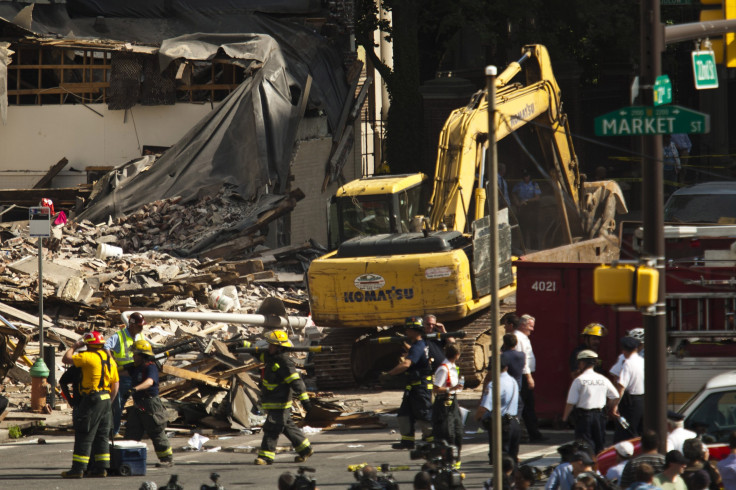Philadelphia Building Collapse: Like A Slice Of Bangladesh

The city of Philadelphia, Penn., may be 10,000 miles away from Bangladesh, but as soon as I heard about the building collapse in the city of Brotherly Love, I immediately thought about the disaster at the garment factory in Dhaka in April, which claimed more than 1,100 lives.
Yes, the scale of the tragedy in Philadelphia was far smaller -- six dead and about a dozen people injured -- but as hard as it might be to believe, parts of Philadelphia and the impoverished Third World country of Bangladesh have much in common.
Both places are scarred by immense poverty, entrenched political corruption, widespread crime and violence and decaying infrastructure. A study by the U.S. Census American Community Survey that tracked the years 2009-11 revealed that of the ten largest U.S. cities, Philadelphia ranked first in the number of people living in “deep poverty”; in other words, those residents who have incomes less than half of the federal poverty line, with an annual income of $5,700 in single-person households or $9,700 for a family of three. Some 200,000 Philadelphians -- about 12.9 percent of the city’s total population -- have that unfortunate designation.
On the whole, the survey noted, more than one-quarter, or 28 percent, of Philadelphia residents are living below the poverty level -- up from about 23 percent in 2000 -- again the highest rate for all large American cities.
"We don't have enough jobs, we don't have an adequate safety net and we don't have adequate schools, so it's a pretty deadly cocktail," John Dodds, director of the Philadelphia Unemployment Project, which advocates for the poor and unemployed, told the Philadelphia Inquirer.
Such people often go hungry, live without running water or electricity -- conditions not too dissimilar to those faced by the masses of Bangladeshis. Philadelphia is not alone. Across the U.S., more than 20 million people live in deep poverty, according to the Center on Budget and Policy Priorities, largely the victims of the collapse of the manufacturing industry and the continuing impact of the financial/mortgage crisis.
But Philadelphia, the second largest city on the East Coast, and considered the cradle of the American Revolution, holds a particularly prominent place in the decline of the U.S. economy and society.
“We are all aware of homelessness, hunger, the violence that’s associated with poverty,” anti-poverty activist Sister Mary Scullion told the CBS affiliate in Philadelphia. “The symptoms are well known in our community.”
Many people in Philadelphia go hungry. The Food Research and Action Center, or FRAC, recently reported that Philadelphia’s First Congressional District ranks as the fourth worst place in all of the U.S. in terms of “food hardship.”
In this region, almost one-third of residents, or 31 percent, don’t have enough money to regularly buy food.
"The number of families who go to bed hungry in my district and across the nation is very distressing." said Rep. Bob Brady (D-Pa.), who represents the district.
Philadelphia also suffers from infrastructure and housing decay. According to media reports, for example, 20 percent of Philadelphia’s bridges, including the Market Street Bridge, are deemed substandard.
“This bridge is a symbol of what’s going on in this country,” a protester and anti-poverty activist named Dennis told Philadelphia Weekly. “The same conditions of this bridge is the bridge that crumbled in Minnesota.”
As in the Dhaka colalpse, questions have been raised about the intergrity of the structure that fell and the possible culpability of the building's owners. Entire neighborhoods in West and North Philadelphia have been abandoned by the city and fester with drug abuse, violent crime and homelessness.
In a country as rich as the U.S., with an extensive system of safety nets, such extreme poverty is unconscionable, but it appears that we have witnessed the formation of permanent underclass of people who will likely remain in such dire straits for many generations to come.
In Bangladesh, which ironically is now where much of the world's small-scale manufacturing is being done due to cheap labor costs, people expect to struggle and suffer -- not just from poverty, but from brutal annual cyclones and other natural disasters. Coping with tragedy is practically in their DNA.
I am certainly not comparing the extent of poverty and hardship found in Bangladesh to the U.S., but one should keep in mind that there are pockets of extreme poverty in this country as well, with deprivation as bad as anything found 10,000 miles away.
© Copyright IBTimes 2024. All rights reserved.











